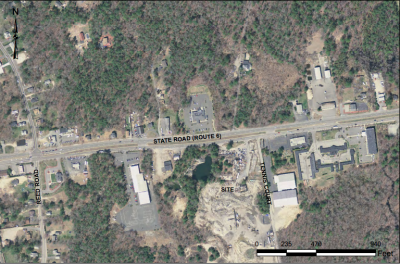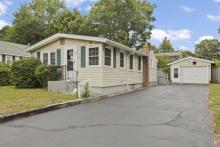Little traffic impact from affordable housing development, engineers say
According to a traffic study, the housing development planned near the intersection of Reed Rd. and State Rd. would have a minimal impact on traffic in the area.
The study was presented at the October 23 meeting of the Zoning Board of Appeals as part of the permitting process for First Dartmouth, LLC. proposed complex. The project was proposed under the state’s Chapter 40B affordable housing law, which allows developers to bypass certain town zoning requirements if the town’s housing stock deemed affordable is below ten percent. In Dartmouth, 8.2 percent of housing is considered affordable.
The Dartmouth Woods developers are proposing a 32 building, 288 unit development.
The traffic study, conducted by Jason Adams of the Boston-based McMahon Associates company, looked at the effect the project would have on the traffic on Rt. 6.
The study was peer-reviewed by Jeffrey Dirk of the Andover-based firm Vanasse and Associates.
Adams explained that he looked at current traffic data, and predicted what traffic would look like in 2024. From there, he included data about what traffic the development would create based on census data about commutes and a national database.
Dirk added that the traffic study gathers data on current traffic by using road tubes which measure the number and speed of cars on the road. The data was gathered over 48 hours, so the engineers could see what traffic was like throughout the day.
“Traffic flow on roadways is subject to human behavior, so we try to do our best to predict how much traffic is gonna go left or right, east or west, but our role as traffic engineers is to say, ‘What if?’” Dirk said, explaining that he and the other engineers looked at a variety of possible traffic patterns.
On Rt. 6, the median prevents drivers from making left turns except for at certain cut-throughs, so residents of the new development wanting to go west on Rt. 6 would need to turn around. The two cut-throughs closest to the driveway of the development are across from the tennis courts and next to the Massachusetts Department Of Transportation Maintenance facility.
The tennis court cut through is so close to the driveway that the engineers agreed that it would be fairly unsafe for drivers to get up to speed, cross two lanes of traffic, and slow down to make a turn. Dirk recommended contacting the DOT to see if that cut through could be closed, which would force drivers to make the turn at the Mass DOT maintenance facility, which is at a safer distance.
The engineers also discussed the visibility for drivers leaving the driveway, which is good enough that it would be safe even if the average speed of travel was 65 miles per hour.
In fact, 85 percent of drivers on Rt. 6 drive at or below 53 miles per hour.
Dirk said that the development will lead to an insignificant increase in delays: three to ten seconds an hour. There would be an increase of one or two cars waiting to turn at cut-throughs.
Plans to reprogram the traffic light at Reed Rd. and Rt. 6 are already underway.
The next public hearing about the development will take place on November 27, and will likely cover environmental topics.












